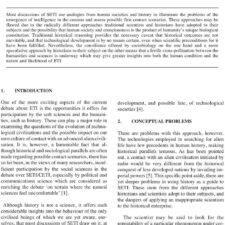Application of Carbon Fibre Truss Technology to the Fuselage Structure of the SKYLON Spaceplane
£5.00
R. Varvill; A. Bond (2004), JBIS, 57, 173-185
Refcode: 2004.57.173
Keywords: Spaceplane design, SKYLON, CFRP space frame, fuselage structure.
Abstract:
A reusable SSTO spaceplane employing dual mode airbreathing/rocket engines, such as SKYLON, has a voluminous fuselage in order to accommodate the considerable quantities of hydrogen fuel needed for the ascent. The loading intensity which this fuselage has to withstand is relatively low due to the modest in-flight inertial accelerations coupled with the very low density of liquid hydrogen. Also the requirement to accommodate considerable temperature differentials between the internal cryogenic tankage and the aerodynamically heated outer skin of the vehicle imposes an additional design constraint that results in an optimum fuselage structural concept very different to conventional aircraft or rocket practice. Several different structural concepts exist for the primary loadbearing structure. This paper explores the design possibilities of the various types and explains why an independent near ambient temperature CFRP truss structure was selected for the SKYLON vehicle. The construction of such a truss structure, at a scale not witnessed since the days of the airship, poses a number of manufacturing and design difficulties. In particular the construction of the nodes and their attachment to the struts is considered to be a key issue. This paper describes the current design status of the overall truss geometry, strut construction and manufacturing route, and the final method of assembly. The results of a preliminary strut and node test programme are presented which give confidence that the design targets will eventually be met.





